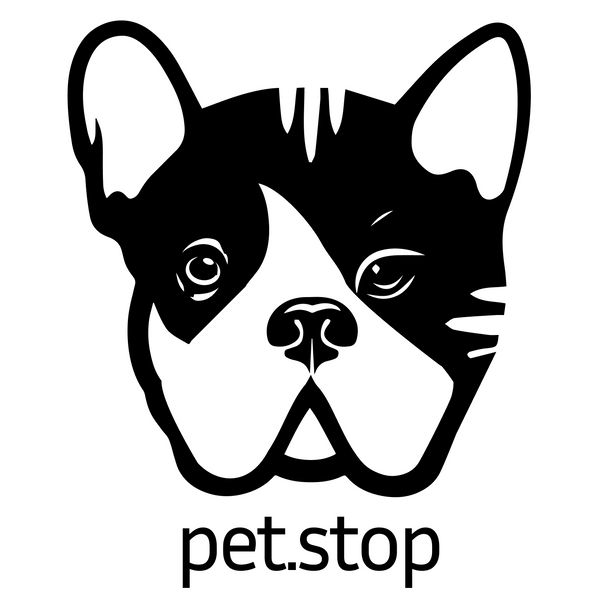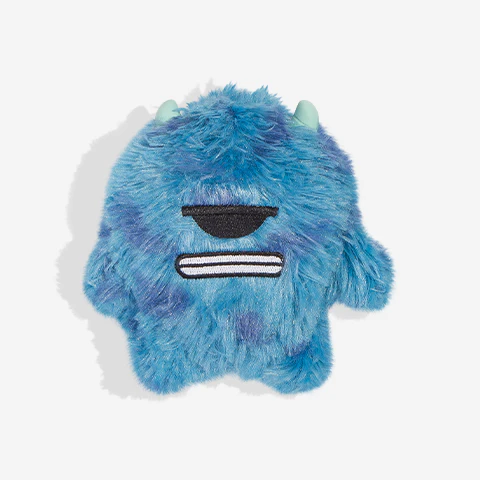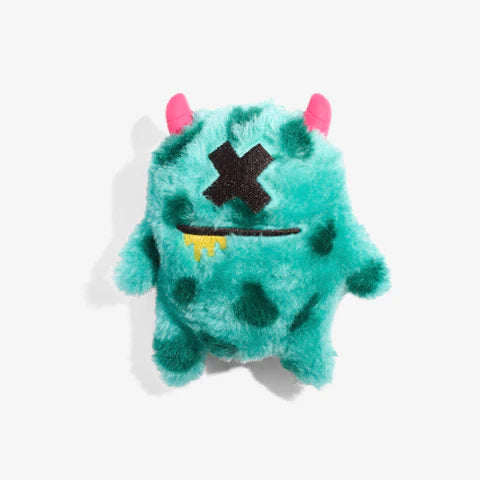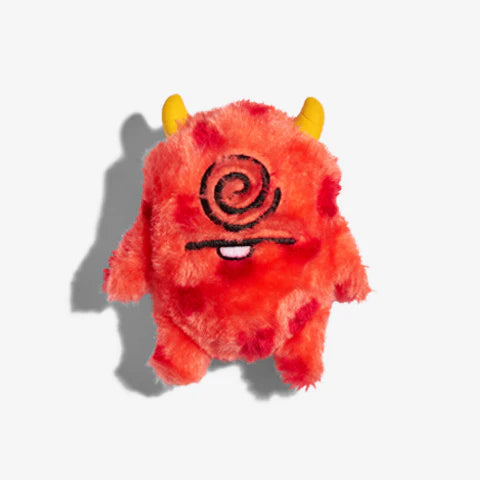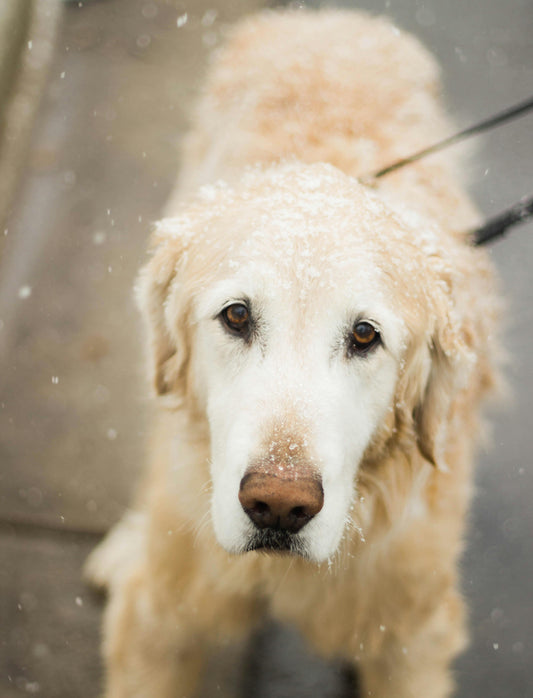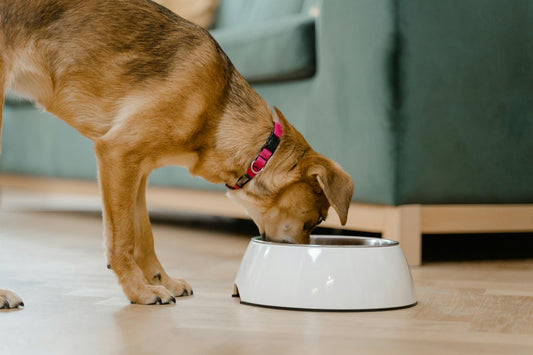Finding engaging ways to interact with a dog can transform routine playtime into something exciting and meaningful. Creative play not only enhances the bond between a dog and owner but also stimulates the dog’s mind and body, ensuring both parties enjoy the experience. From inventive games to unique training methods, there are countless opportunities to keep playtime fresh and interesting.
Utilizing everyday objects can lead to fun and innovative play. Simple items like cardboard boxes or old towels can inspire games of hide-and-seek or treasure hunts that challenge a dog’s natural instincts. Incorporating movement and agility exercises can also provide mental stimulation while promoting physical health, turning a leisurely backyard session into an active adventure.
Additionally, incorporating interactive toys and puzzles can keep a dog engaged for longer periods. These tools encourage problem-solving and reward-based activities, appealing to a dog's intelligence. Exploring these creative play options can deepen the connection between a dog and owner, making every moment spent together enjoyable and fulfilling.
Understanding Canine Playtime
Playtime is essential for a dog's well-being. It contributes to physical fitness, mental stimulation, and promotes a strong bond between dog and owner. Recognizing the benefits, types, and signals of canine play can enhance the experience for both.
Benefits of Play
Engaging in play provides numerous benefits to dogs. It helps develop their physical skills, such as agility and endurance, through various activities. Regular play also stimulates cognitive functions, encouraging problem-solving and creativity.
Socialization is another important aspect of playtime. It allows dogs to interact with other dogs and people, improving their communication skills. This can lead to better behavior and reduced anxiety in social settings.
Emotional health is also positively impacted. Playtime can reduce stress and alleviate boredom, minimizing destructive behaviors.
Types of Play
Dogs enjoy various types of play, enriching their experiences. Common forms include fetch, tug-of-war, and hide-and-seek. Each type offers unique benefits and keeps the dog engaged.
- Interactive Play: Involves direct interaction with the owner through activities like fetch or tugging, building a strong bond.
- Social Play: Engaging with other dogs fosters communication and social skills.
- Solo Play: Dogs can also entertain themselves with toys, promoting independence and self-stimulation.
Different breeds may prefer specific types of play based on their natural instincts and energy levels. Recognizing individual preferences is key to a fulfilling playtime experience.
Recognizing Play Signals
Understanding play signals is crucial for a safe and enjoyable environment. Dogs communicate their readiness to play through body language and vocalizations.
Key signals include:
- Play Bow: A front-end lowered position with raised hindquarters, signaling a desire to play.
- Barking and Growling: These sounds can indicate excitement and engagement during play.
- Chasing and Pouncing: Quick movements and playful pounces often indicate a playful mood.
Owners should observe their dog's behavior to ensure they are comfortable and eager to engage. Recognizing these signs helps create a positive playtime experience for both the dog and the owner.
Indoor Activities
Indoor activities can keep dogs mentally stimulated and physically active, even when outdoor play isn't possible. Engaging in various games and using interactive toys can strengthen the bond between a dog and its owner.
Puzzle Toys
Puzzle toys are designed to challenge a dog's problem-solving skills. These toys often dispense treats as the dog interacts with them, promoting both mental engagement and physical activity.
Examples of puzzle toys include:
- Kong Classic: Fill it with peanut butter or treats.
- Outward Hound Hide-A-Squirrel: Dogs can dig out plush toys from a larger toy.
Using puzzle toys encourages dogs to think and explore, which can reduce boredom and prevent destructive behaviors. Regularly rotating toys keeps the experience fresh and exciting.
Hide and Seek
Hide and seek is an interactive game that dogs enjoy. To play, the owner hides in a different room and calls the dog to come find them.
This activity promotes:
- Mental stimulation: Dogs use their senses to locate their owner.
- Exercise: Running around searching for their owner provides physical benefits.
Adding treats or toys as rewards can enhance the excitement of the game. This activity not only engages a dog's instincts but also deepens their connection with their owner.
Tug of War
Tug of war is a classic game that allows dogs to express their natural instincts. Using a sturdy rope or tug toy, the owner and dog can engage in a friendly pulling match.
Key points include:
- Encourages exercise: The physical effort promotes fitness.
- Builds strength: Tugging can help develop a dog's muscles.
To ensure the game remains safe:
- Use appropriate toys designed for tugging.
- Establish rules, such as stopping if the dog becomes too aggressive.
Tug of war can be a great way to bond with a dog while providing an energetic outlet.
Obstacle Course
Creating an indoor obstacle course can provide exercise and mental stimulation. Using household items, owners can set up jumps, tunnels, and weave poles.
Steps to set up an obstacle course include:
- Choose a safe area: Ensure there is enough space for dogs to move freely.
- Use available items: Incorporate cushions, chairs, or blankets as barriers.
Engaging a dog through an obstacle course can enhance agility and coordination. Owners can time their dog to add a competitive edge. Regularly changing the layout keeps the activity engaging and challenging.
Outdoor Fun
Playing outside offers various opportunities for dogs to exercise, bond with their owners, and enjoy the fresh air. Engaging in activities like fetch, frisbee, agility training, and water play can stimulate a dog’s mind and body while creating enjoyable moments together.
Fetch Variations
Fetch is a classic game but can be enhanced with variations. Instead of a standard throw, try rolling the ball or using different toys like plushies or rubber bones.
Tips for variation:
- Use a launcher for longer throws.
- Incorporate obstacles for added excitement.
- Change locations, like parks or beaches, to keep it interesting.
Each change can help dogs develop skills and keep their interest high. The essential goal is to encourage movement and ensure the dog stays engaged throughout the game.
Frisbee Games
Frisbee is not just for humans; dogs love it too. Using a soft frisbee can minimize the risk of injury while making it easy for dogs to catch.
Play suggestions:
- Start with simple tosses to build confidence.
- Practice tricks or commands like "catch" or "drop" to enhance the experience.
- Incorporate a timed element to challenge them further.
Playing frisbee not only provides physical exercise but also improves a dog’s coordination and agility, fostering a deeper connection between pet and owner.
Agility Training
Agility training turns a garden or backyard into an obstacle course. Dogs can weave through cones, jump over hurdles, or crawl through tunnels.
Setting up an agility course:
- Use everyday items like chairs, boxes, and broomsticks.
- Start with simple tasks and progressively increase difficulty.
- Always reward the dog with treats or praise for completing obstacles.
This activity helps dogs develop strength, balance, and focus. It also allows owners to train specific commands, reinforcing good behavior while having fun.
Water Play
Water activities can be thrilling for many dogs, especially in warm weather. From swimming to retrieving toys from the water, these games ensure hydration and enjoyment.
Ideas for water play:
- Use kiddie pools for smaller dogs.
- Encourage swimming in lakes or beaches while ensuring safety.
- Incorporate retrieval games with floating toys.
Supervision is crucial during water play. Knowing a dog’s swimming abilities can lead to positive and safe experiences. Water play not only cools down dogs but also provides essential exercise and stimulation.
Interactive Games
Engaging dogs through interactive games fosters physical exercise and mental stimulation. These activities enhance the bond between the pet and owner while making playtime enjoyable.
Command-Based Play
Command-based play utilizes basic obedience commands to create fun and structured interactions. This approach reinforces training while keeping dogs engaged.
-
Sit and Stay: Owner instructs the dog to sit and stay while throwing a toy. The dog must wait before retrieving it, enhancing impulse control.
-
Fetch with a Twist: Incorporate commands such as "drop it" or "bring it here" during fetch. This adds layers to the game, requiring the dog to respond to multiple cues.
-
Hide and Seek: A fun twist to command play involves hiding while the dog stays. Upon release, the dog searches for the owner, combining “come” with the excitement of a game.
Command-based play provides both learning and entertainment, ensuring dogs stay mentally challenged.
Treasure Hunts
Treasure hunts promote problem-solving and physical activity. They involve hiding treats or toys around the home or yard, encouraging dogs to use their noses and instincts.
-
Indoor Treasures: Begin by placing treats under furniture or within designated hiding spots. Vary the difficulty level as the dog improves at finding the hidden items.
-
Outdoor Adventures: Create a scavenger hunt in the backyard. Dogs can search for a mix of treats and toys, allowing them to explore their environment.
-
Using Scent: Incorporate scent work by using specific scents on objects. Dogs learn to track specific items within the treasure hunt, enriching their natural abilities.
Treasure hunts stimulate a dog’s senses and provide an entertaining challenge.
Training Combined With Play
Incorporating training into playtime can enhance a dog's learning experience. Engaging methods that combine fun with commands can strengthen the bond between the dog and its owner while promoting good behavior.
Training Through Play
Training through play allows dogs to learn commands and skills in a relaxed environment. Activities such as fetch can be modified to include commands like “sit” or “drop it.” This encourages the dog to follow commands while enjoying the game.
Tips for Training Through Play:
- Use high-value treats to motivate the dog.
- Keep training sessions short, around 5-10 minutes.
- Gradually increase the difficulty of tasks as the dog improves.
By making training enjoyable, dogs are more likely to remain focused and responsive.
Behavioral Games
Behavioral games target specific skills and reinforce positive behaviors. These games provide mental stimulation and can solve behavioral issues like excessive barking or jumping.
Examples of Behavioral Games:
- Hide and Seek: The owner hides, and the dog must find them. This promotes recall skills.
- Puzzle Toys: These toys challenge dogs to figure out how to access treats, enhancing problem-solving skills.
Incorporating these games into routines can transform training from a chore into an entertaining experience.
DIY Toys and Games
Creating DIY toys and games for a dog can be both fun and rewarding. These activities enhance mental stimulation and strengthen the bond between pet and owner.
Homemade Puzzle Toys
Homemade puzzle toys can engage a dog's problem-solving skills. One simple idea is to use a muffin tin.
- Place treats in several cups of the muffin tin.
- Cover each cup with a tennis ball or similar-sized ball.
This encourages dogs to uncover their rewards by removing the balls. Another option is to cut holes in a plastic bottle. Fill it with kibble; as the dog rolls it, treats will fall out.
These puzzles challenge dogs mentally and provide a sense of accomplishment when they find the treats.
Crafting Interactive Toys
Interactive toys can entertain and stimulate dogs creatively. A tug toy can be made from old T-shirts or fleece.
- Cut long strips from the fabric.
- Braid the strips together, tying both ends securely.
This provides an engaging activity for dogs who love to tug.
Another interactive toy is a snuffle mat. Use a rubber mat and tie strips of fabric tightly to it. Hide treats within the fabric folds, prompting dogs to sniff them out.
Both options promote play, bonding, and provide exercise while being easy to create with household items.
Social Playtime
Social playtime is essential for a dog's mental and physical well-being. Engaging in activities with other dogs helps develop their social skills and can create positive experiences.
Dog Park Adventures
Dog parks offer an excellent opportunity for dogs to interact with others in a controlled environment. At these parks, dogs can run freely, play fetch, or engage in games like chase with their peers.
To maximize enjoyment and safety, it's important to observe the park's rules and ensure dogs are properly vaccinated and well-socialized. Owners should monitor their dog's interactions to prevent aggressive behavior and ensure all dogs remain comfortable.
Creating a routine visit to the dog park can foster social bonds, providing dogs with regular playtime and exercise. This consistent exposure also helps dogs become more adaptable to varying environments and situations.
Playdates with Other Dogs
Organizing playdates with other dogs can enhance a dog's social skills in a more personal setting. Identifying a compatible playmate is key, as fostering friendships between dogs can lead to enjoyable interactions.
When planning a playdate, select a neutral location to avoid territorial behavior. Owners should supervise the play to ensure all interactions remain positive. Engaging in activities such as tug-of-war or fetch can keep the dogs active and entertained.
Setting a time limit for playdates can help manage energy levels and prevent overstimulation. After play, allowing for a cool-down period can promote a more relaxed environment, making future playdates more enjoyable for all involved.
Sensory Enrichment Play
Sensory enrichment play engages a dog's senses, enhancing their mental stimulation and promoting their well-being. By incorporating scent and sound elements, owners can create fun and engaging activities for their pets.
Scent-Based Games
Scent-based games tap into a dog's natural olfactory instincts. Dogs have an extraordinary sense of smell, and utilizing this can provide significant mental stimulation.
Popular scent-based activities include:
- Hide and Seek: Hide treats or toys around the house or yard for dogs to find.
- Scent Trails: Use a favorite treat to create a trail that the dog can follow to a hidden reward.
- Search and Sniff: Place various scented items in a box, allowing the dog to explore and identify different smells.
These activities often improve focus and promote problem-solving skills. They can also strengthen the bond between the owner and the dog through collaborative play.
Sound Stimulation
Sound stimulation is another way to enrich a dog's environment. Dogs are sensitive to various sounds, and playing with this aspect can help them build confidence.
Examples of sound-based interactions include:
- Musical Toys: Choose toys that make sounds when squeezed or tossed. These can intrigue the dog and encourage interaction.
- Nature Sounds: Play recordings of birds, rustling leaves, or other natural sounds to see how the dog reacts.
Incorporating these elements can lead to curiosity and exploration. It encourages dogs to engage with their environment in new and exciting ways, enhancing their sensory experiences.
Playtime for Senior Dogs
Playing with senior dogs requires a thoughtful approach to ensure their comfort and engagement. Adapted activities can provide mental stimulation and physical exercise tailored to their needs.
Gentle Play Ideas
For older dogs, gentle play is essential. Activities should focus on low-impact exercises that accommodate their physical limitations. Here are some suggestions:
- Short Walks: Frequent, leisurely strolls around the yard or neighborhood keep them active without overexerting them.
- Fetch with a Twist: Use softer toys and throw them shorter distances. This helps maintain interest without straining their bodies.
- Interactive Toys: Puzzle toys that dispense treats encourage gentle movement and mental engagement. They can stimulate thinking and keep dogs occupied.
Adjusting the intensity and duration of play is crucial. Monitor the dog for signs of fatigue and take breaks as needed.
Cognitive Games for Aging Dogs
Engaging a senior dog's mind is vital for their overall well-being. Cognitive games can enhance mental agility and provide enrichment. Here are effective activities:
- Hide and Seek: Hide treats around the house or yard. This encourages the dog to use their nose while also providing light exercise.
- Name That Toy: Teach the dog to recognize and fetch specific toys by name. This enhances memory skills and provides a fun challenge.
- Obstacle Course: Create a simple indoor or outdoor course using household items. Dogs can navigate around or through objects, fostering coordination and focus.
Mental games help stave off cognitive decline, keeping seniors active and happy.
Safety Precautions
Ensuring a safe play environment for dogs is essential. This involves supervising their activities, choosing appropriate toys, and recognizing signs of overstimulation. Each of these aspects helps maintain a positive experience for both the dog and the owner.
Supervising Play
Supervision is crucial during playtime to prevent accidents or injuries. A responsible owner should remain vigilant and engaged while their dog plays. This allows for immediate intervention in case of rough play or potential hazards.
- Watch for aggression: Dogs can occasionally exhibit aggressive behavior. Owners should be attentive to any signs of conflict, including growling or snapping.
- Monitor interactions: If multiple dogs are playing, observe their body language and interactions to ensure everyone is comfortable and safe.
- Set boundaries: Establish clear rules about acceptable play behavior. Reinforce positive interactions and discourage rough play.
Safe Toys
Choosing the right toys significantly impacts a dog's safety during play. Not all toys are suitable for every dog, and owners must select options that prevent choking or injury.
- Durable materials: Select toys made from high-quality, non-toxic materials. Look for those specifically designed for dogs, as they tend to withstand chewing better.
- Size matters: Ensure the toy is appropriate for the dog's size. Small toys pose a choking hazard for larger breeds, while oversized toys may frustrate smaller dogs.
- Inspect regularly: Check toys frequently for wear and tear. Discard any toys that show signs of damage, such as fraying or breakage.
Recognizing Overstimulation
Dogs can become overstimulated during play, leading to stress or anxiety. Identifying these signs allows owners to intervene and adjust playtime accordingly.
- Signs of overstimulation: Look for behaviors such as excessive barking, panting, or pacing. A dog may also obtain a “wild” demeanor or seem unable to settle down.
- Take breaks: Encourage regular breaks during play. Providing downtime allows the dog to calm down and reduces the likelihood of overstimulation.
- Create a calm environment: Designate a quiet space where the dog can retreat to decompress if play becomes too overwhelming. This helps maintain a balanced experience during play.
